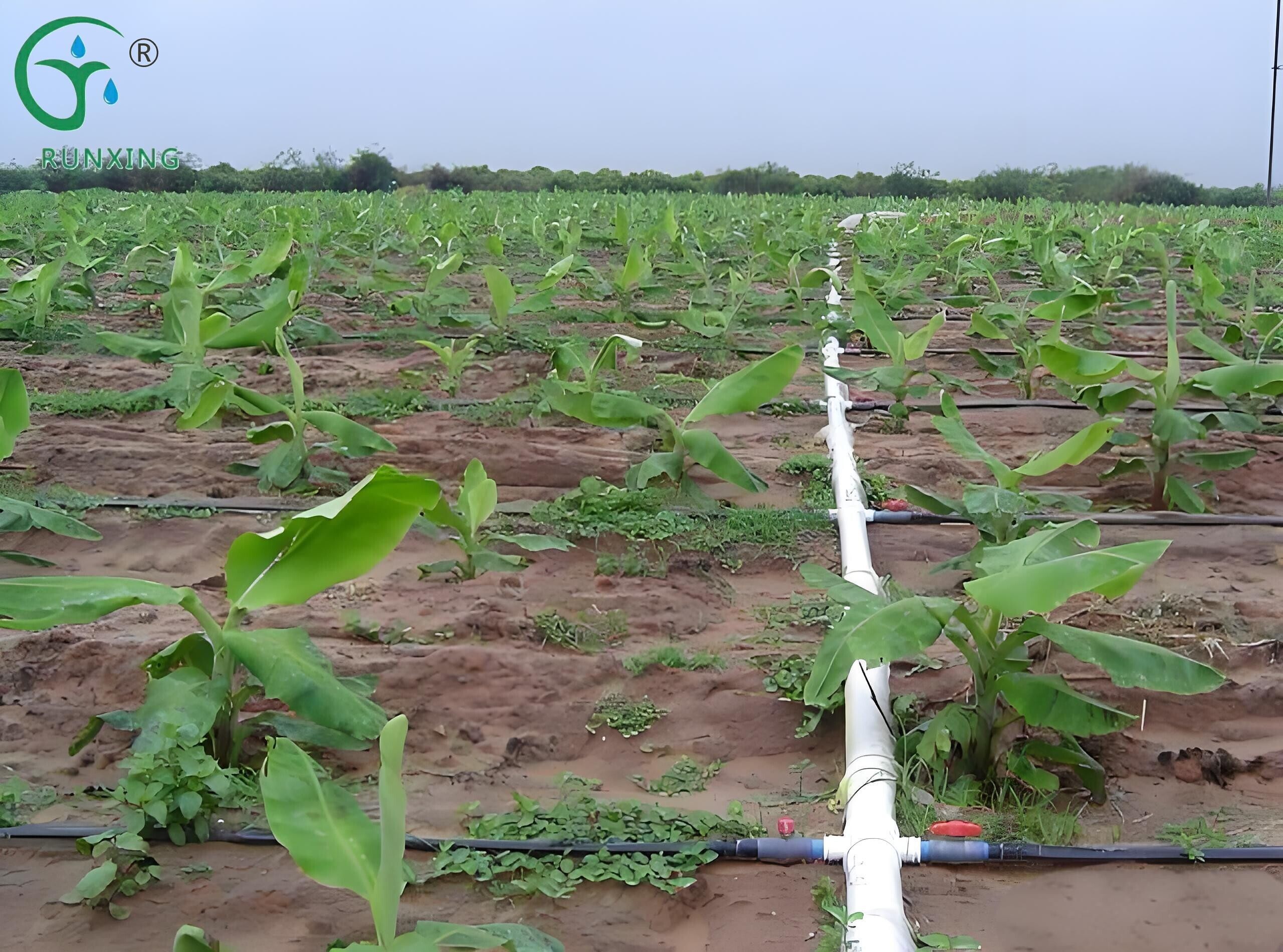Irrigation with Drip Systems in Banana Cultivation in South America
In South America, bananas are a crucial tropical fruit, and their cultivation techniques and irrigation methods are vital for enhancing yield and quality. Drip irrigation systems, as an efficient irrigation method, have been widely adopted in banana cultivation in South America. Below, we will delve into whether drip irrigation is necessary for banana cultivation in South America, the required drip irrigation equipment and its installation method, as well as some effective cultivation tips.

I. Is Drip Irrigation Necessary for Banana Cultivation in South America?
Banana cultivation areas in South America are mostly in tropical and subtropical climates, with abundant but unevenly distributed rainfall. The soil is often acidic and well-drained. In such an environment, drip irrigation systems have become an important choice for improving irrigation efficiency, conserving water resources, improving soil structure, and reducing pests and diseases. Drip irrigation allows for precise control of water application, preventing root suffocation and soil compaction due to excessive moisture, thereby enhancing banana yield and quality.
II. Required Drip Irrigation Equipment and Installation Method
Required Equipment:
Drip Tubes: Each row of bananas should be equipped with two drip tubes with hole spacings of 20-30 centimeters to ensure uniform water distribution.
Drippers: The flow rate of drippers should be controlled at 2-4 liters per hour to ensure that water drips slowly and continuously into the soil.
Fertilizer Tanks: Used for dissolving water-soluble fertilizers and applying them through the drip irrigation system.
Pressure Pumps: Used to provide the water pressure required for irrigation.
Installation Method:
Planning and Layout: Based on the terrain, slope direction, and gradient of the banana orchard, plan the layout of the drip irrigation system.
Installing Drip Tubes: Lay the drip tubes along the banana rows, ensuring uniform spacing between drippers to avoid water concentration or omission.
Connecting Water Sources: Connect the pressure pump to the water source and deliver water pressure to the drip irrigation system through pipelines.
System Debugging and Inspection: After installation, debug and inspect the system to ensure that all components are tightly connected and there are no leaks.
III. Better Banana Cultivation Tips
Soil Preparation:
Choose fertile, organic-rich soil with good drainage.
Deeply turn the soil before planting, apply organic fertilizer, and adjust soil pH.
Reasonable Irrigation:
Use drip irrigation systems to precisely control water application and maintain soil moisture without being too wet.
During peak water demand periods for bananas, apply 2-3 liters of water per mu per day.
Ensure the drainage system is unobstructed during the rainy season to prevent water accumulation.
Scientific Fertilization:
Calculate the total fertilizer requirement based on the banana growth stage and soil nutrient status.
Use water-soluble fertilizers and apply them through the drip irrigation system to ensure uniform fertilizer distribution.
Follow the principle of applying small amounts of fertilizer multiple times to avoid soil pollution due to excessive fertilizer.
Pruning and Flower Cluster Control:
Promptly prune flowering clusters and wilted parts to allow the plant to better utilize nutrients.
Control the number of flower clusters to ensure that each flower stem blooms only once, improving fruit quality.
Pest and Disease Control:
Closely monitor plant conditions and regularly spray pesticides or use natural organic control methods.
Be vigilant against tropical pests and diseases such as black leaf spot, bacterial wilt, and powdery mildew.
Microclimate Management:
Reasonably arrange planting density to ensure good ventilation for the canopy and leaves.
Provide appropriate shading to prevent leaf burn from intense direct sunlight.
Harvest Management:
Harvest bananas promptly when they are ripe, neither too early nor too late.
Be careful when picking fruits to protect the flower clusters and prevent damage to enhance the next season's yield.

By adopting drip irrigation systems and combining the above cultivation tips, banana farmers in South America can significantly improve banana yield and quality, providing the market with high-quality tropical fruits.
If you have any needs, please contact us.
About Us
We are dedicated to offering innovative, water-saving, and labor-saving irrigation solutions for agriculture worldwide. Our focus on quality and continuous innovation drives the development and progress of the industry

